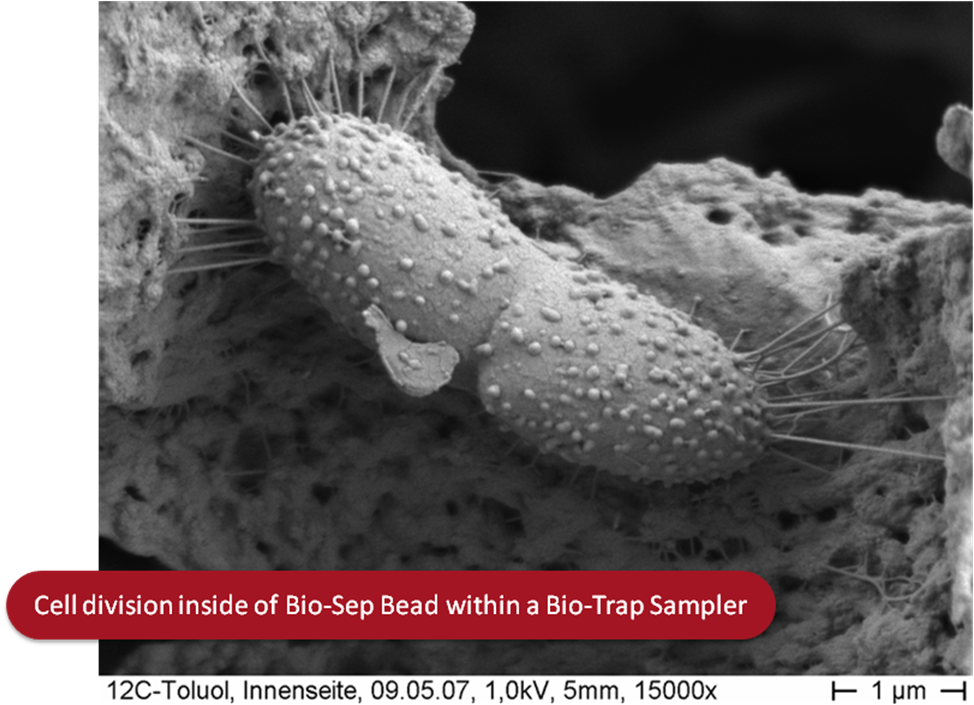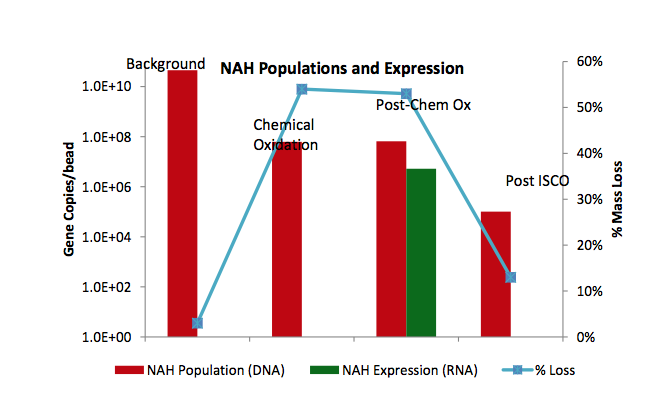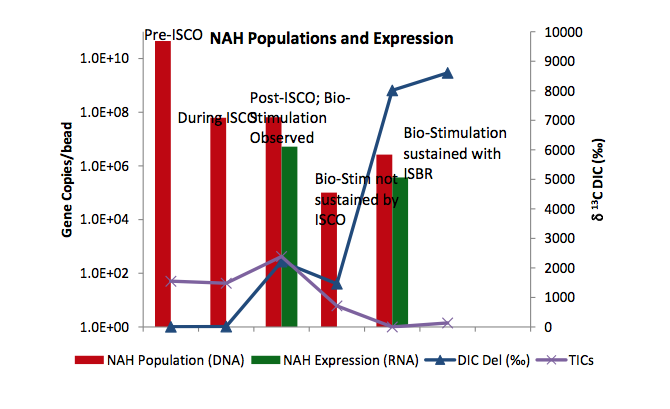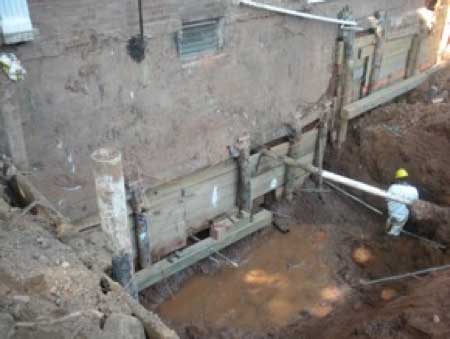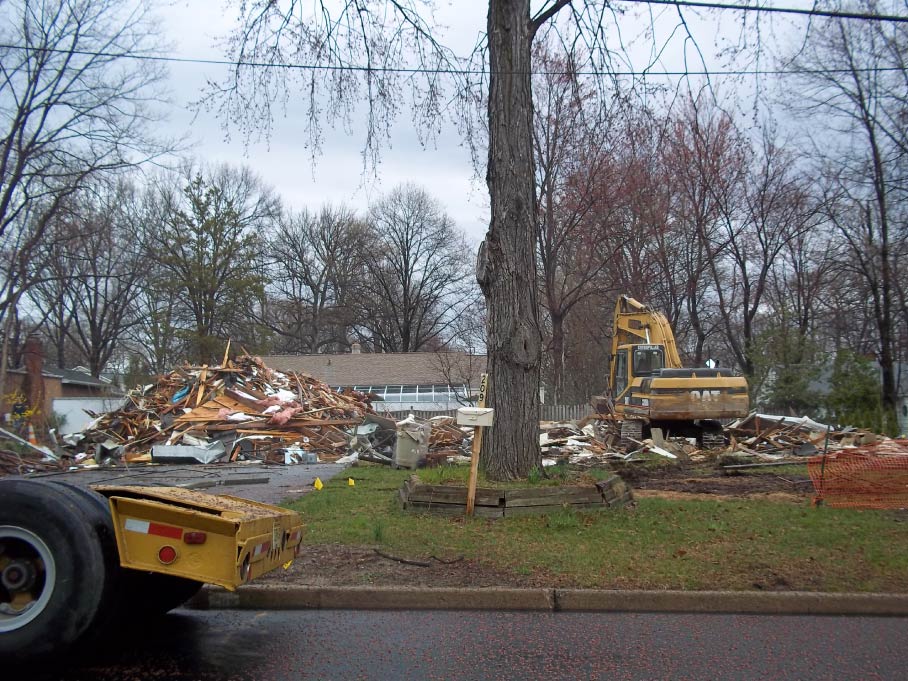Case Study: Bio-Remediation
Site Location and Description
Private Residence: A fuel oil release occurred beneath an historic structure (house constructed in 1839). Although several remedial efforts were completed to date, fuel oil compounds persist beneath the structure. The remedial efforts consisted of a large scale soil removal program (1,000 tons removed), two oxygen release compound (ORC) injections, and a small-scale chemical oxidation remediation.
Key Project Elements
Bio-stimulation was observed after the chemical oxidation, but was not sustained, as shown below. Using Environmental Molecular Diagnostics (EMDs) and a novel and emerging remedial technology, an In-Situ Bio-Reactor (ISBR) from Bio-Enhance, ground water quality remediation was finally achieved.
Bio-Trap samplers analyzed by Microbial Insights were used to colonize and measure changes to the indigenous microbial community at the site under varying conditions.
Bio-stimulation was initially observed after a chemical oxidation injection, but not sustained once the partially oxidized materials and dissolved oxygen flux from the injection dissipated.
The use of EMDs, such as Stable Isotope Probing (SIP), revealed the site was suitable for bio- stimulation of the petroleum residues through the use of an In Situ Bio-Reactor (ISBR), provided by Bio-Enhance. The ISBR allows for healthy microbes from within the ISBR to migrate into the well column and into the formation beyond the well to further promote the biodegradation of the residual petroleum hydrocarbons in the aquifer.
As shown to the left, sustainable aerobic bio-stimulation was achieved through the installation of a novel ISBR. The remediation of this site is featured as the Interstate Regulatory and Technology Council’s web-based guidance document on Environmental Molecular Diagnostics.
